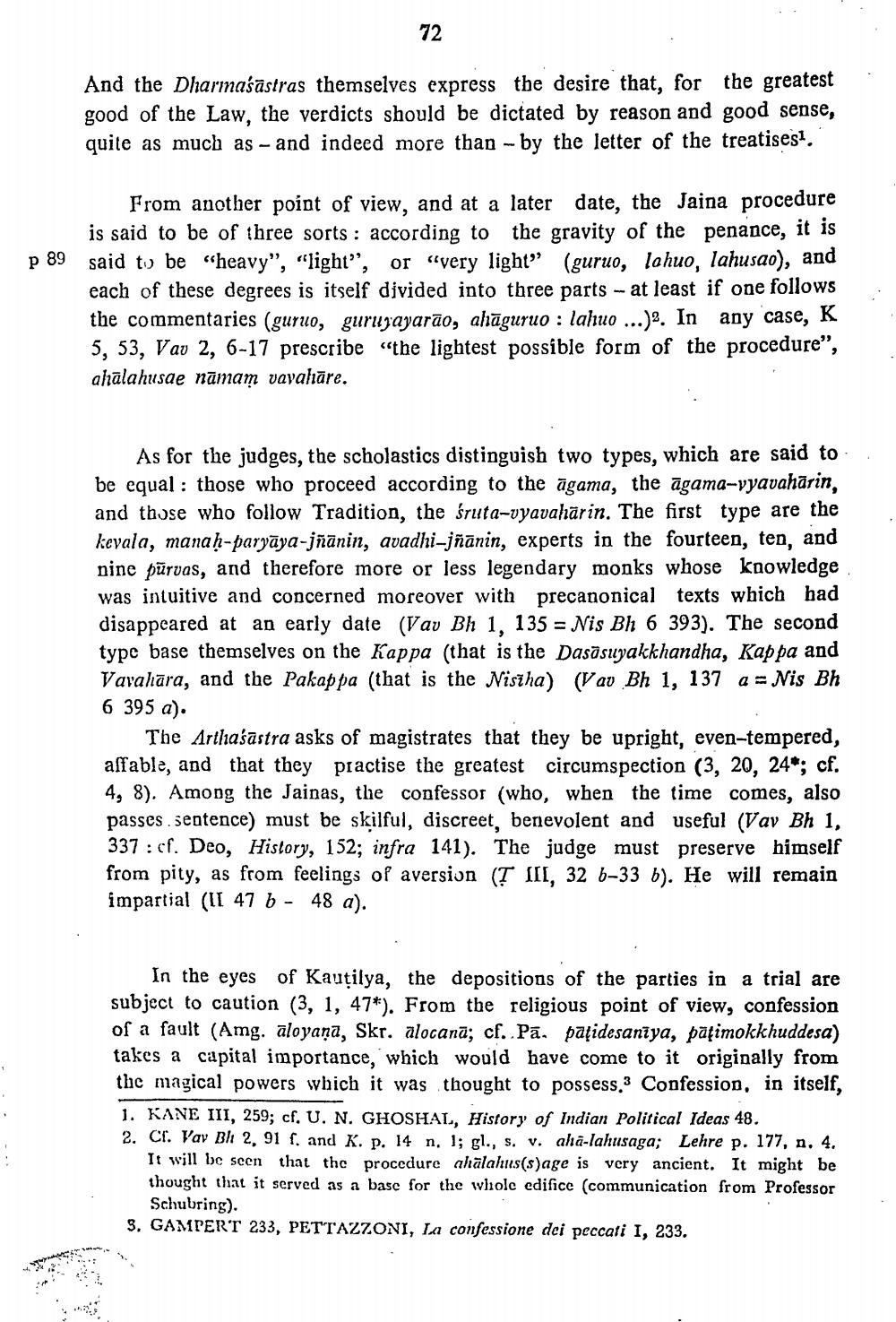________________
72
And the Dharmaśāstras themselves express the desire that, for the greatest good of the Law, the verdicts should be dictated by reason and good sense, quite as much as - and indeed more than -- by the letter of the treatises.
p 89
From another point of view, and at a later date, the Jaina procedure is said to be of three sorts : according to the gravity of the penance, it is said to be “heavy", "light", or "very light” (guruo, lohuo, lahusao), and each of these degrees is itself divided into three parts - at least if one follows the commentaries (guruo, guruzayarão, ahāguruo : lahuo ...)2. In any case, K 5, 53, Vav 2, 6-17 prescribe "the lightest possible form of the procedure”, ahalahusae nāmam vayahāre.
As for the judges, the scholastics distinguish two types, which are said to be equal : those who proceed according to the āgama, the āgama-vyavahārin, and those who follow Tradition, the śruta-vyavahārin. The first type are the kevala, manah-paryāya-jñānin, avadhi-jñānin, experts in the fourteen, ten, and nine pürvas, and therefore more or less legendary monks whose knowledge was intuitive and concerned moreover with precanonical texts which had disappeared at an early date (Vav Bh 1, 135 = Nis Bh 6 393). The second type base themselves on the Kappa (that is the Dasāsuyakkhandha, Kappa and Vavahāra, and the Pakap pa (that is the Nisiha) (Vav Bh 1, 137 a = Nis Bh 6 395 a).
The Arthasastra asks of magistrates that they be upright, even-tempered, affable, and that they practise the greatest circumspection (3, 20, 24*; cf. 4, 8). Among the Jainas, the confessor (who, when the time comes, also passes sentence) must be skilful, discreet, benevolent and useful (Vav Bh 1, 337 : cf. Deo, History, 152; infra 141). The judge must preserve himself from pity, as from feelings of aversion (T III, 32 6–33 b). He will remain impartial (IL 47 b - 48 a).
In the eyes of Kautilya, the depositions of the parties in a trial are subject to caution (3, 1, 47*). From the religious point of view, confession of a fault (Amg. aloyana, Skr. alocanā; cf..Pā, pațidesaniya, päțimokkhuddesa) takes a capital importance, which would have come to it originally from the magical powers which it was thought to possess,3 Confession, in itself, 1. KANE III, 259; cf. U. N. GHOSHAL, History of Indian Political Ideas 48. 2. Cr. Vav Bh 2, 91 f. and K. p. 14 n. 1; gl., s. v. aha-lahusaga; Lehre p. 177, n. 4.
It will be seen that the procedure ahālahus(s)age is very ancient. It might be thought that it served as a base for the whole edifice communication from Professor
Schubring). 3. GAMPERT 233, PETTAZZONI, La confessione dei peccati I, 233.




